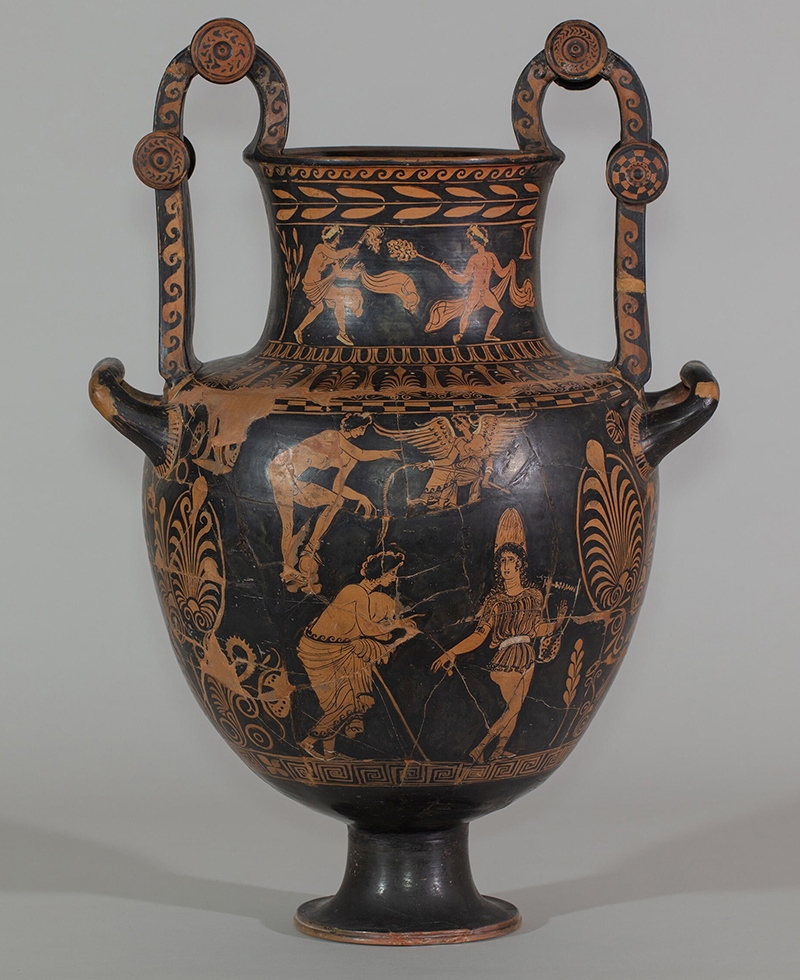Ancient Nestoris attributed to the Primato Painter
By Bowdoin College Museum of Art
Nestoris (two-handled jar), terracotta, red-figure, attributed to the Primato Painter, Greek, Late Classical, South Italian, Lucanian, ca. 350–325 BCE. Gift of the Misses Harriet Sarah and Mary Sophia Walker. Bowdoin College Museum of Art.
This striking vase was the first painted Greek vase to enter the Bowdoin College Museum of Art’s collection. It is in the form of a nestoris, a two handled jar often with attached discs decorating the handles and an additional pair of horizontal handles on the body. The form was adapted from local Italian shapes by Greek potters working in the Greek colonies of southern Italy.
The decoration of this vessel is attributed to the Primato Painter, one of the last Greek vase painters working in Lucania in Southern Italy in the second half of the fourth century BCE. His designs exhibit special attention to elaborate floriate motifs, as on the sides and shoulder of this vessel. The figures that populate the vessel in three registers—one around the neck and two registers on either the front and back—do not cohere into a recognizable myth or narrative. Rather, they are stock figures—satyrs, youths, and a winged victory—who engage in various revelries, lending a convivial air to the vase.
The vase was purchased for the Museum by Harriet and Sophia Walker, wealthy Massachusetts benefactors whose vision and generosity are responsible for the commission and design of the 1894 McKim, Mead, and White neoclassical building that today houses one of the largest antiquities collections on a college campus. In selecting this vase, the sisters consulted with the American collector Edward Perry Warren, whom they knew through Boston circles and who would later donate much of his own collection to the Museum, including a significant and comprehensive collection of Greek vases.
In many ways, this early donation served as a seed for the collections of the new Museum building, as well as an indication of the significance the Walker sisters—like most Americans of the late nineteenth century—attached to the study of original pieces of ancient Mediterranean art. These and other stories feature prominently in Antiquity & America: The Ancient Mediterranean in the United States currently on view and reveals the enduring American fascination with the world of the ancient Mediterranean and the diverse and creative ways that Americans have engaged with antiquity for centuries.
Sean P. BurrusInterim Curator and Andrew W. Mellon Post-Doctoral Curatorial Fellow
Bowdoin College Museum of Art